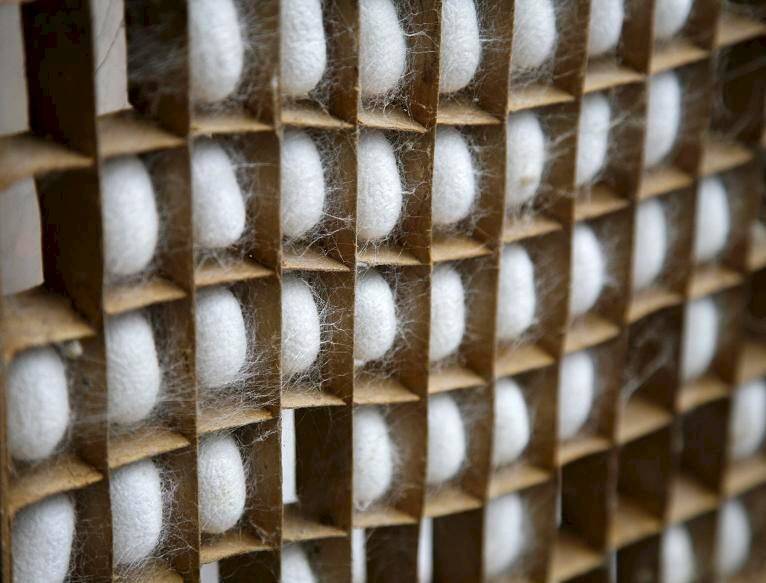Mulberry silk versus wild silk: what is the difference?
As a 100% natural product, silk has some very interesting properties and therefore many advantages to offer. However, these advantages depend on the type of silk you sleep on or under.
As you may be aware, there are different types of silk. The best known are mulberry silk and wild silk. Discover the differences between these two types of silk below!
And did you know that not only the type of silk, but also the number of mm or ‘momme’ impacts the quality of your silk bedding? Read all about momme and why it is important in silk here.
Also remember that there is still a lot of confusion about the difference between silk and satin. Read all about it here.
Mulberry silk
The best-known type of silk is mulberry silk. It is made by the Bombyx Mori silkworm. Mulberry silk is only grown in nurseries, where the silkworm feeds exclusively on leaves of the mulberry tree, hence the name. As Bombyx Mori only eats mulberry leaves, the cocoon thread takes on a beautifully even white colour.
Another major difference with wild silk cocoon threads is that mulberry silk cocoon threads are extra long. A cocoon of the mulberry silkworm produces an average of 1,500 metres of silk thread. This length ensures, among other things, that a mulberry silk duvet cover or a silk pillowcase feels very smooth and has a beautiful sheen. The thread is also very even and fine, yet extremely strong and therefore also very durable. In fact, mulberry silk is the strongest natural fibre in the world. If you compared a mulberry silk fibre to a steel wire of the same diameter, you would find that the mulberry silk is even stronger than the steel!
Mulberry silk is the highest-quality silk and therefore very suitable for bedding. Therefore, our silk brands Emperior Silk and Mikmax exclusively use mulberry silk for their bedding. You can instantly feel the difference with wild silk.

Wild silk
You may have heard of wild silk. Unlike the name seems to suggest, wild silkworms are also completely dependent on humans and do not occur in the wild anymore. However, silk is cultivated in the wild. Wild silk actually refers to all the silk types that have not been spun by the Bombyx Mori silkworm.
A silkworm in the wild has a much more varied diet than the mulberry silkworm. Whereas the mulberry silkworm only eats leaves of the mulberry tree, the wild silkworm feeds on chestnut and oak leaves, among others. The cocoon threads of the wild silkworm are therefore more irregular, browner and less fine than those of the mulberry silkworm.
Since wild silk consists of shorter and thicker fibres, it always looks duller than mulberry silk. The threads also have a rougher structure than mulberry silk. These characteristics make wild silk less suitable for bedding, but it can of course be perfectly used for clothing or interior textiles.
Unfortunately, wild silk does not offer the same advantages as mulberry silk. It has fewer anti-allergenic properties, it does not offer the same heat regulation and since wild silk is less smooth, it does not help prevent wrinkles or keep hair smooth and shiny. It therefore comes as no surprise that wild silk is always slightly cheaper than mulberry silk.
Mulberry silk pillowcases in various sizes and colours: 69 euro
Double mulberry silk duvet cover set (duvet cover + two pillowcases): from 847 euro
Want to know more about our mulberry silk duvet covers or mulberry silk pillowcases? Don’t hesitate to stop by our Nachtwacht store in Kortrijk or contact us online!


